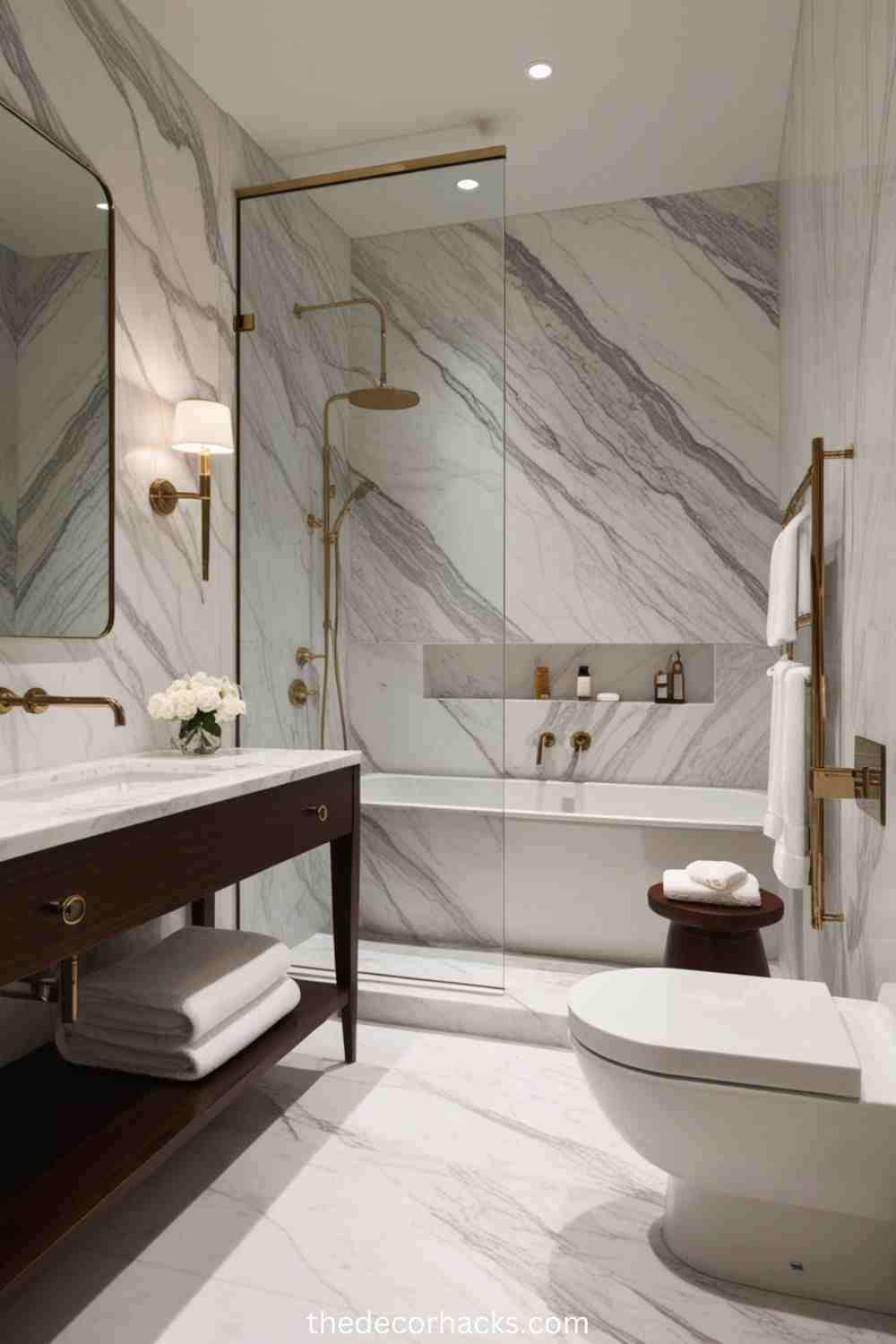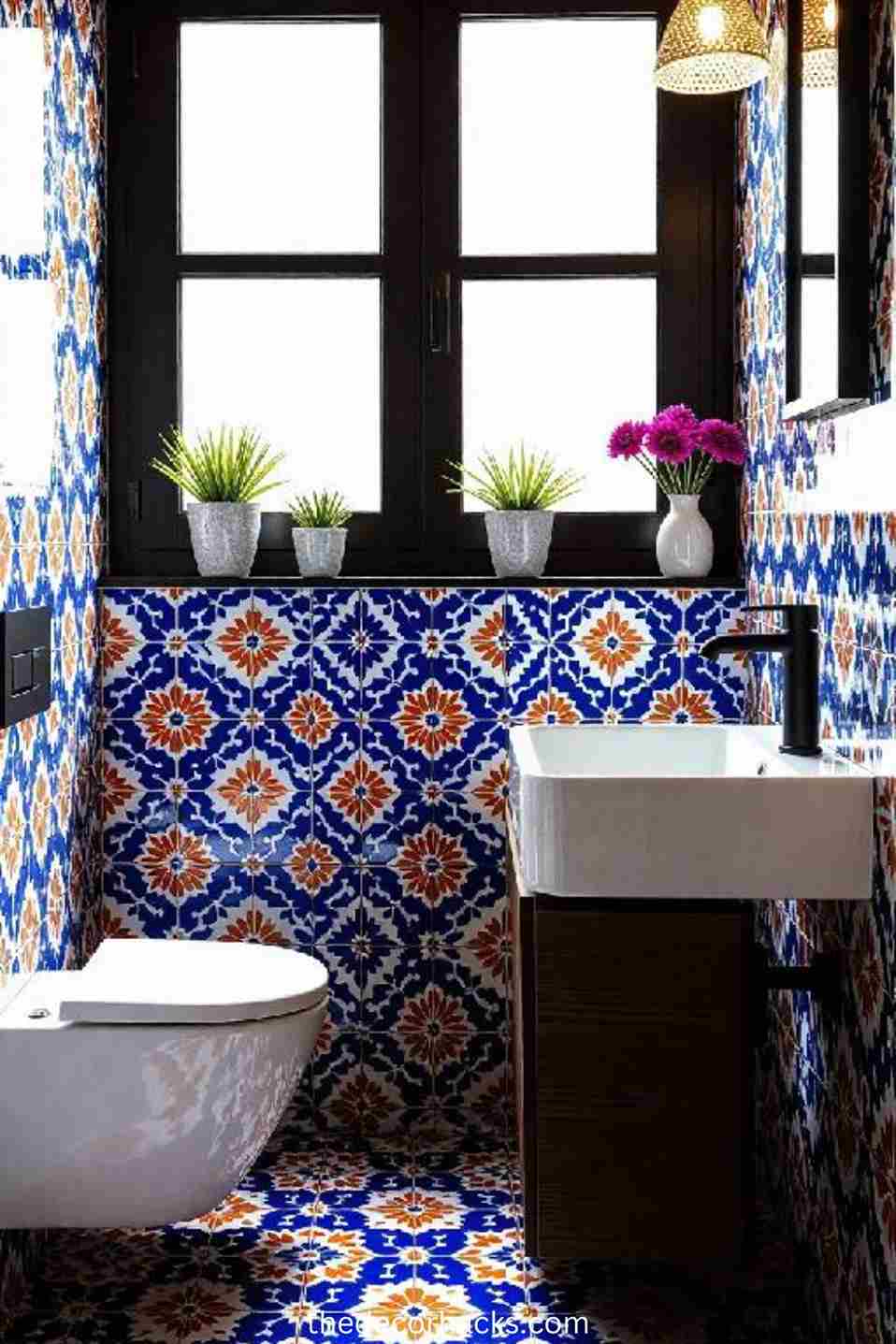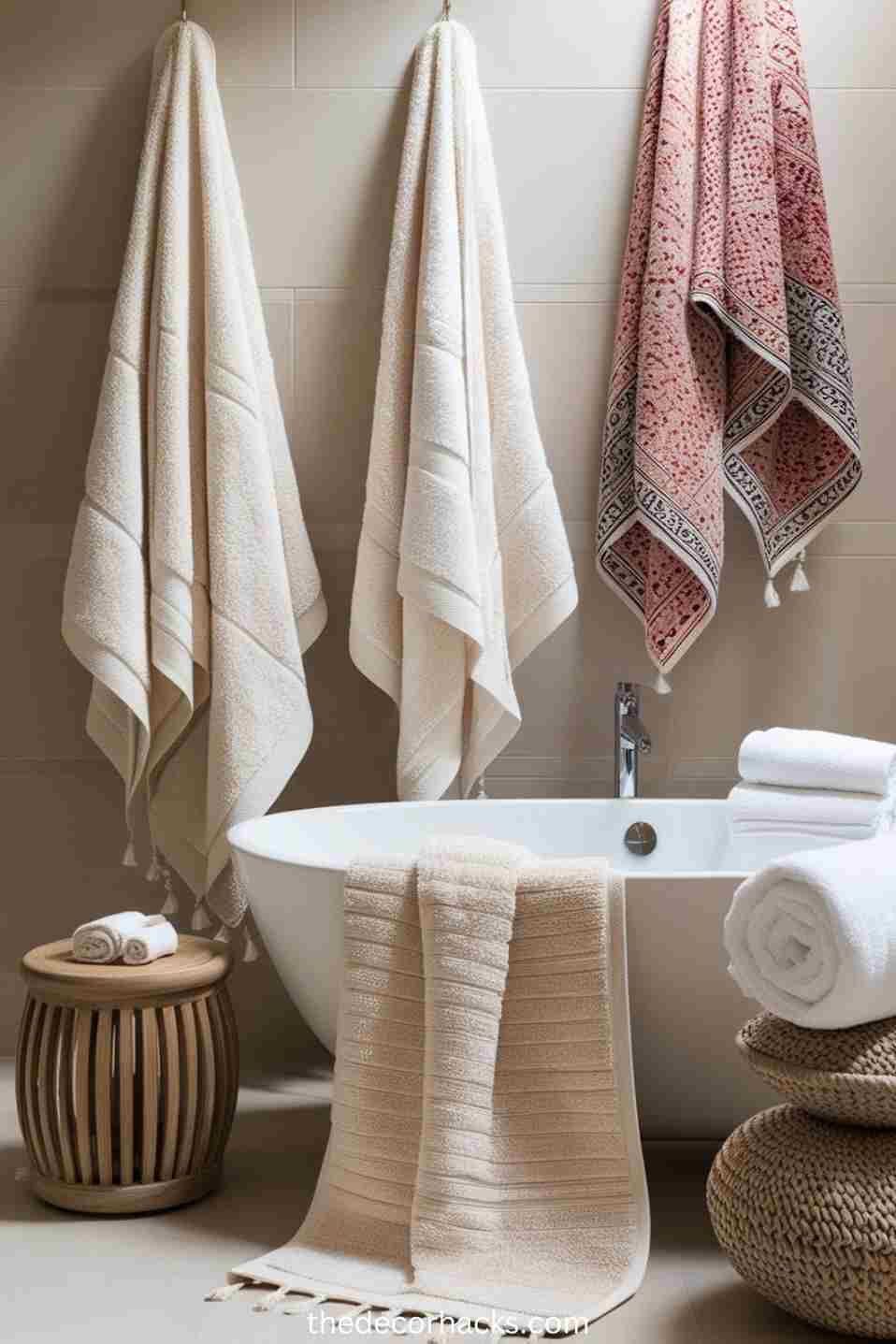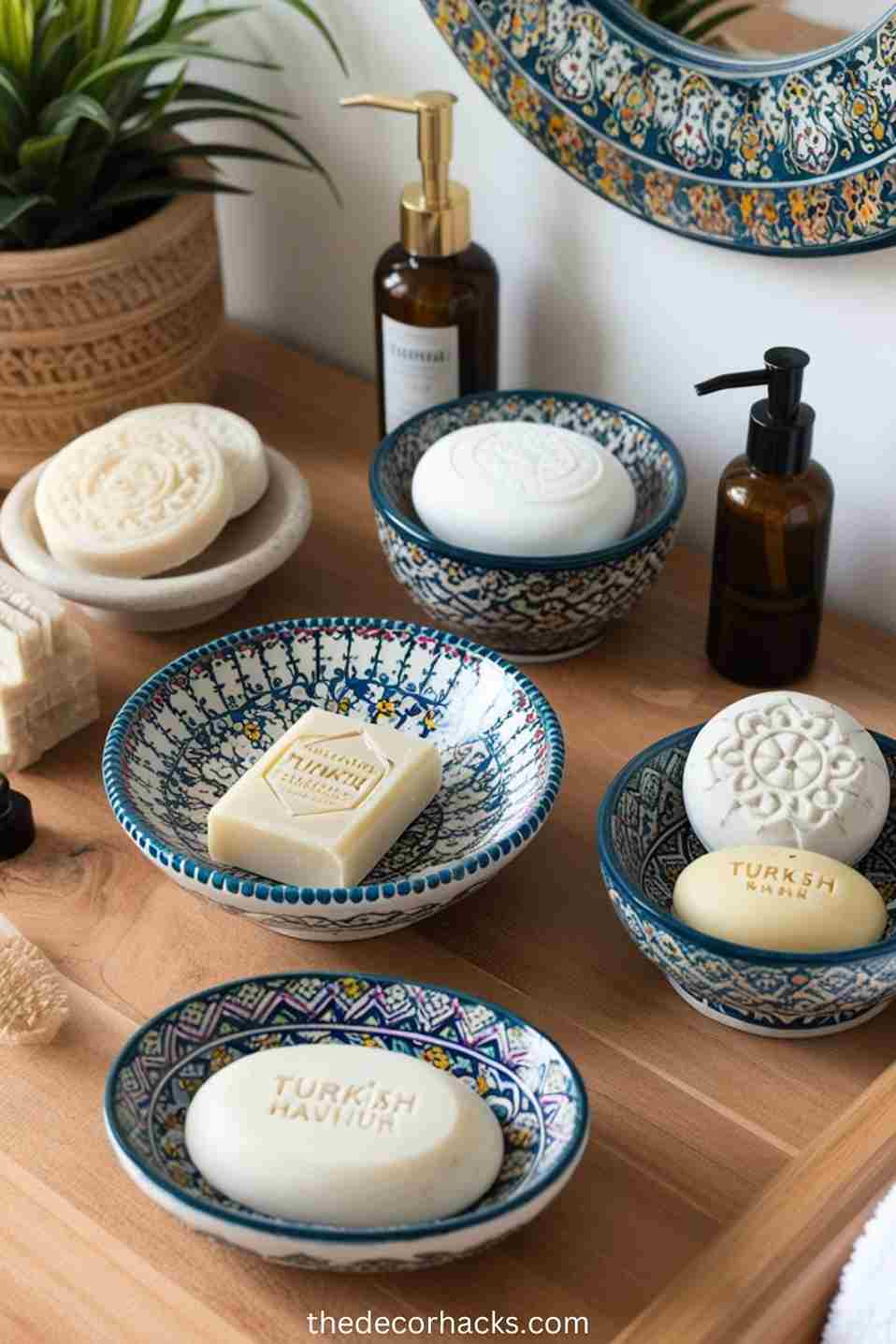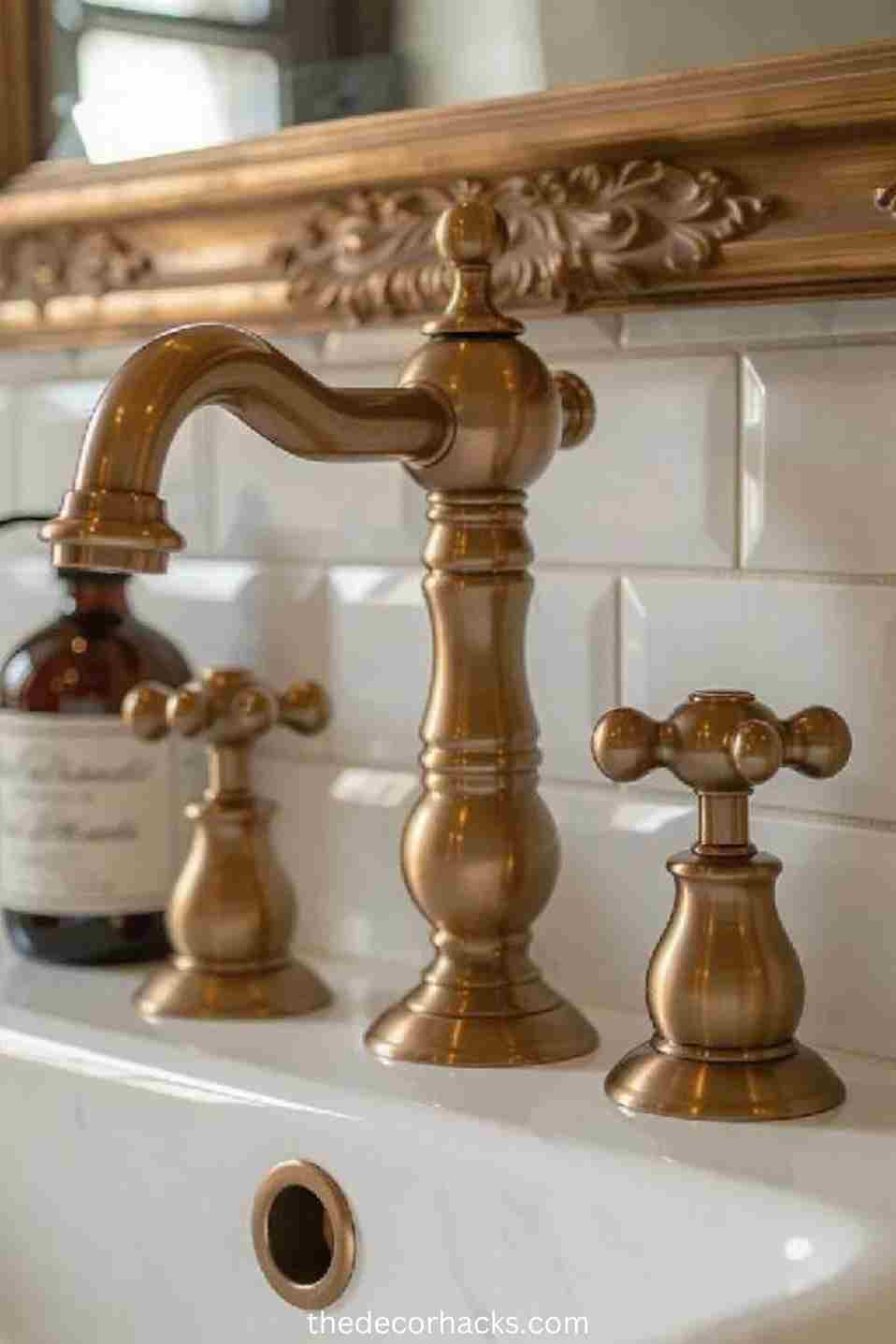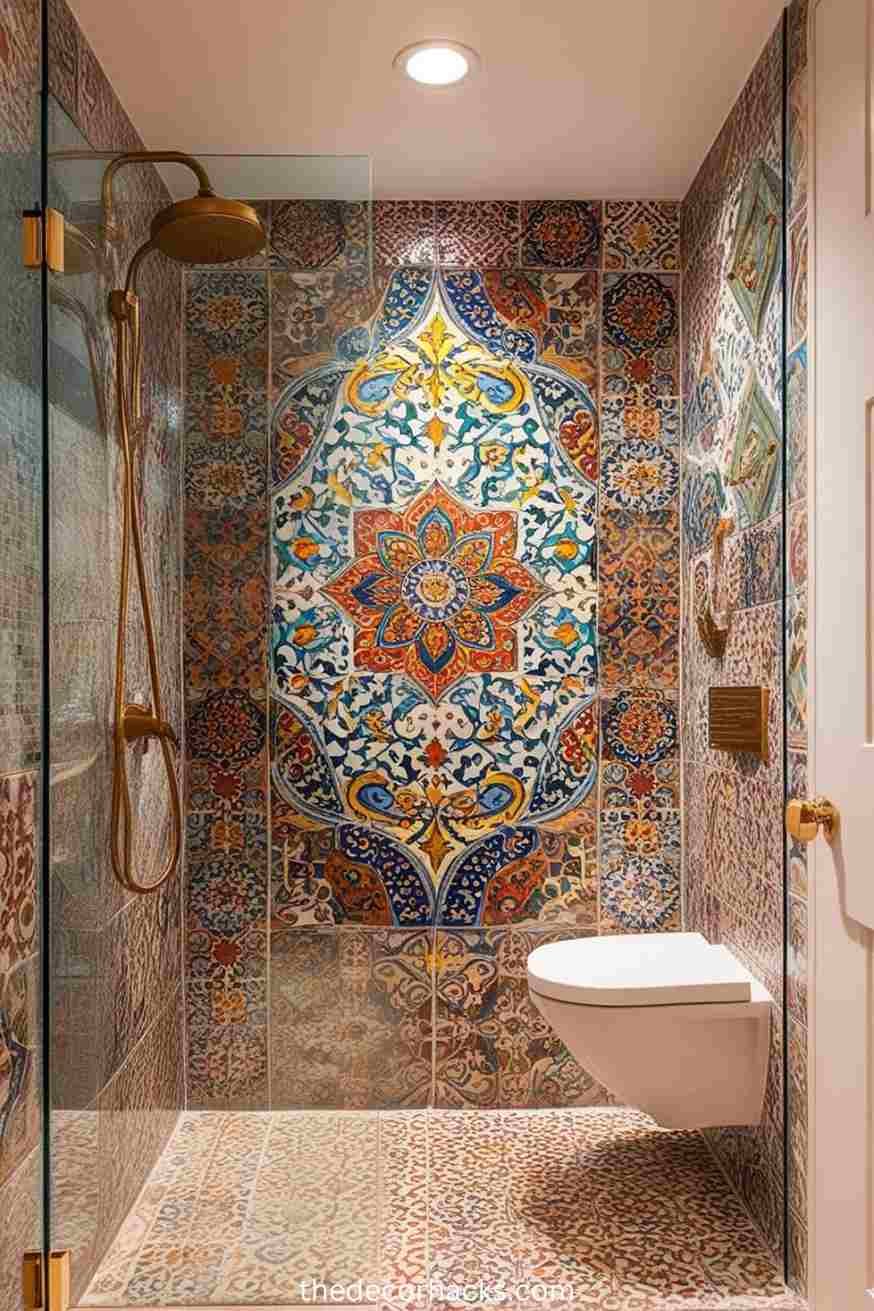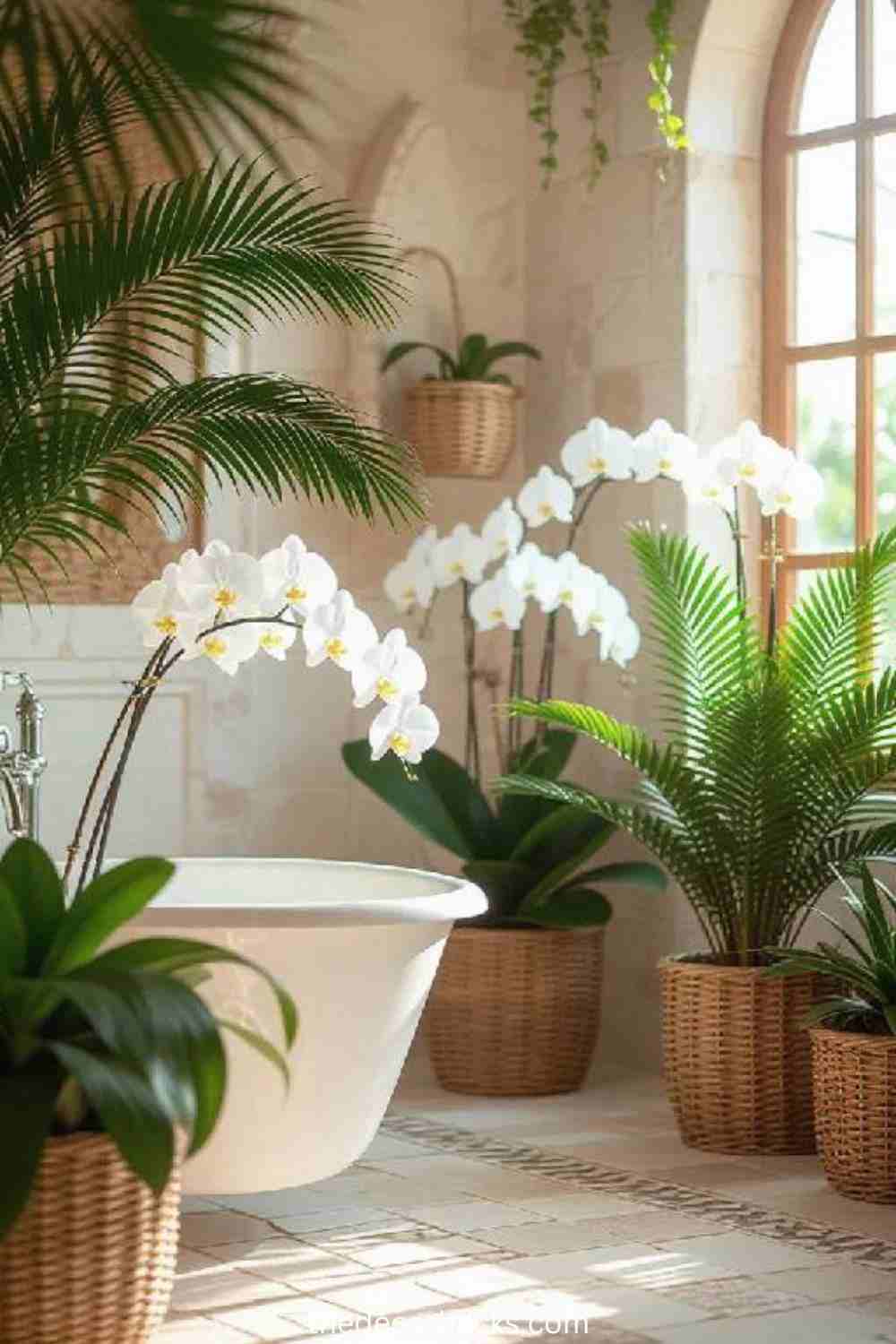Turkish Bathroom Decor Ideas seamlessly blend rich tradition with modern comfort, offering a unique fusion of elegance and functionality. Rooted in the centuries-old tradition of Turkish baths, or Hammams, these decor ideas evoke a sense of timeless luxury while embracing contemporary aesthetics. Hammams have long been an essential part of Turkish culture, serving as spaces not only for bathing but also for socializing, relaxation, and ritual. The serene, opulent atmosphere of a Hammam is characterized by intricate tile work, marble surfaces, and ambient lighting, all designed to create a calming and inviting environment. These elements have influenced modern bathroom design, infusing homes with the same sense of tranquility and indulgence that was once reserved for royal palaces and grand public baths. By incorporating Turkish-inspired decor into your bathroom, you can create a space that is both steeped in history and infused with a sense of contemporary luxury.
Turkish Bathroom Decor Ideas
Bold and Elegant Marble Elements
Marble is a cornerstone of Turkish bathroom design, offering timeless elegance and sophistication. Using marble for floors, walls, and countertops creates a luxurious, polished look that instantly elevates the space.
Intricate Tile Work and Patterns
Turkish bathrooms often feature colorful, hand-painted tiles with intricate geometric and floral patterns. These tiles, such as the iconic Iznik tiles, add vibrant character and traditional charm to any bathroom.
Ambient Lighting and Lanterns
Soft, warm lighting is essential in creating a relaxed, spa-like atmosphere. Turkish-inspired lanterns, often made of mosaic glass, cast beautiful, intricate shadows that enhance the tranquil vibe of the bathroom.
Plush Towels and Fabrics
Plush towels and fabrics, such as traditional hammam cloths (peshtemals), are integral to Turkish bathroom decor. These lightweight, yet absorbent towels add a touch of luxury and comfort while reflecting the rich textile heritage of Turkey. Opting for soft, high-quality towels in neutral tones or vibrant patterns enhances both the aesthetic and functional elements of the space.
Elegant Wooden Accents
Incorporating wooden accents into a Turkish-inspired bathroom adds warmth and natural beauty to the space. Teak wood shelving, benches, and vanity units provide a stunning contrast to the cool tones of marble and tiles. The use of wood creates a harmonious balance between luxury and nature, while also evoking a sense of tranquility reminiscent of traditional Turkish Hammams. These wooden elements not only elevate the decor but also contribute to the serene and earthy ambiance of the bathroom.
Classic Turkish Soap Dishes and Bowls
Traditional Turkish soap dishes and bowls bring both functionality and artistry to the bathroom. Often crafted from ceramic or stone, these pieces are beautifully adorned with intricate patterns and designs. They serve as elegant accents while holding soaps, oils, and other bath essentials. Incorporating these classic pieces into your bathroom not only enhances the aesthetic but also pays homage to Turkish craftsmanship, adding a touch of authentic cultural flair.
Spacious and Open Layout
A spacious, open layout is a hallmark of Turkish bathroom design, inspired by the expansive, airy interiors of traditional Hammams. The design emphasizes uncluttered spaces that promote a sense of freedom and relaxation. Large, open areas allow for easy movement and the incorporation of luxurious features like freestanding bathtubs or expansive shower spaces. By focusing on openness, Turkish-inspired bathrooms create a calming and serene environment, where one can enjoy the tranquil atmosphere without feeling confined.
Traditional Brass Fixtures
Brass fixtures, such as faucets and handles, add a touch of opulence to Turkish bathrooms. Their vintage appeal and rich, golden hue enhance the timeless beauty of the space while maintaining a connection to traditional Turkish design elements.
Mosaic and Glass Shower Walls
Mosaic tiles are a stunning feature in Turkish bathrooms, often used to create intricate designs on shower walls. Paired with transparent glass, they allow the vibrant colors and patterns to shine while maintaining an open, airy feel.
Natural Elements and Greenery
Incorporating plants like ferns, palms, or orchids into Turkish bathroom decor brings a refreshing touch of nature. These natural elements not only enhance the aesthetic but also promote a calming, rejuvenating atmosphere, aligning with the serene ambiance of Turkish bath traditions.
FAQ
What are the key features of Turkish bathroom decor?
Turkish bathroom decor is characterized by luxurious marble, intricate tile work, ambient lighting, and traditional fixtures like brass faucets and mosaic glass lanterns. It blends opulence with comfort, often incorporating elements like plush towels, wooden accents, and greenery.
How can I incorporate traditional Turkish tiles into my bathroom?
You can incorporate Turkish tiles by using colorful, hand-painted patterns like those found in Iznik tiles. These can be placed on the walls, floors, or even as accents in the shower area to add vibrant detail and texture.
What type of lighting works best in a Turkish-inspired bathroom?
Soft, warm lighting works best, often through the use of mosaic or glass lanterns. These fixtures create a cozy, spa-like atmosphere with beautiful light reflections, enhancing the traditional Turkish bath ambiance.
Can I achieve a Turkish bathroom look in a small space?
Yes, you can create a Turkish-inspired bathroom in a small space by focusing on key elements like marble surfaces, compact mosaic tiles, and ambient lighting. Opt for sleek fixtures and use mirrors to create a sense of openness.

Hi! I’m Meg Yoder, a Pennsylvania-based designer with a passion for brand development and home decor design. Creativity has always been my driving force, whether I’m crafting a cohesive brand identity or reimagining a living space with unique decor hacks.
I created TheDecorHacks.com as a space to share my favorite design ideas, tips, and inspirations. From DIY projects to expert insights, my goal is to help you transform your spaces into something extraordinary—without breaking the bank.
When I’m not busy designing, you can find me exploring vintage markets, experimenting with color palettes, or sipping coffee while sketching my next big idea. Let’s create something beautiful together!
![The Decor Hacks [Trending Decor Design Ideas]](https://thedecorhacks.com/wordpress/wp-content/uploads/2025/01/cropped-the-decor-hacks.png)

